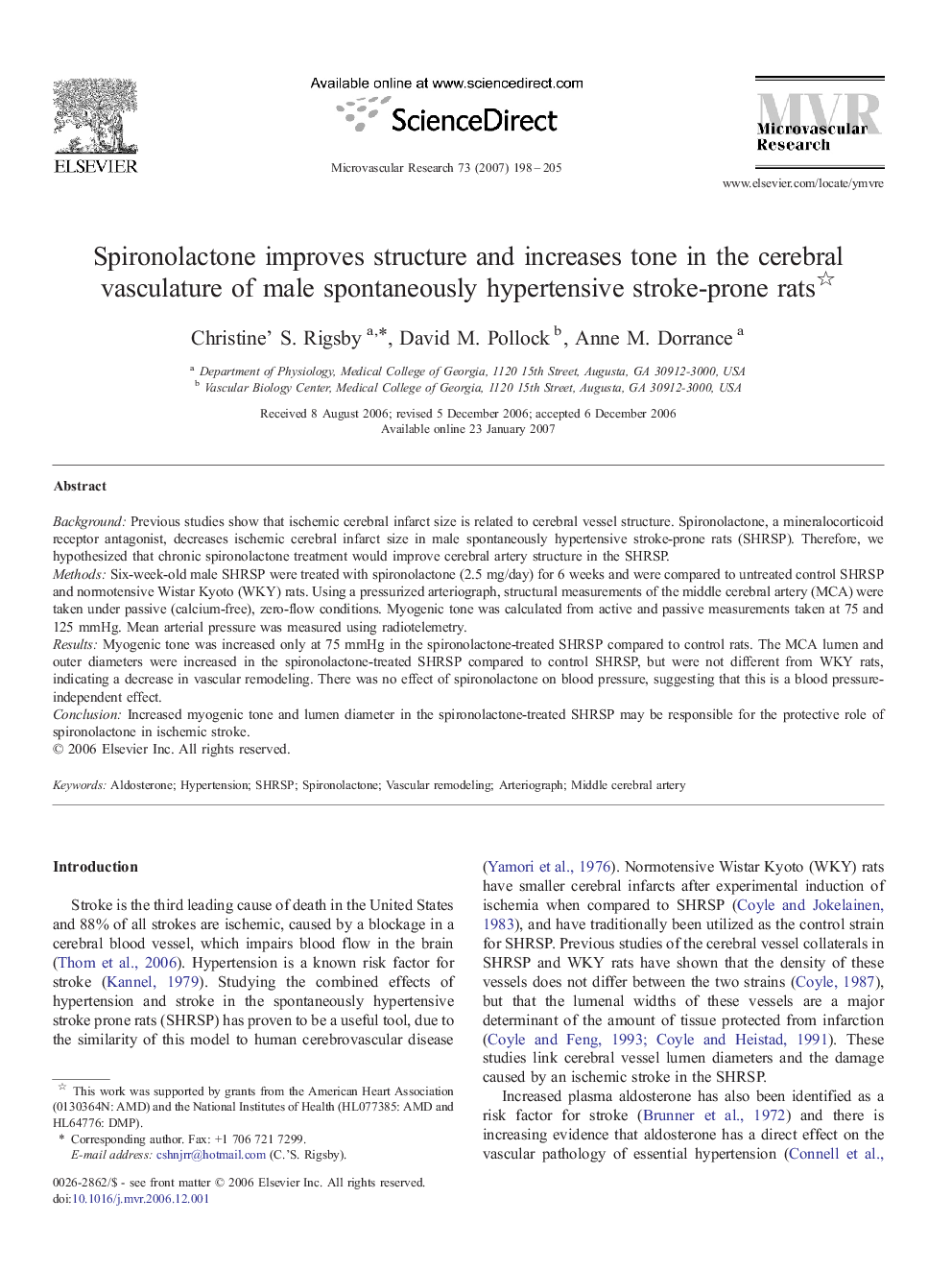| Article ID | Journal | Published Year | Pages | File Type |
|---|---|---|---|---|
| 1995501 | Microvascular Research | 2007 | 8 Pages |
BackgroundPrevious studies show that ischemic cerebral infarct size is related to cerebral vessel structure. Spironolactone, a mineralocorticoid receptor antagonist, decreases ischemic cerebral infarct size in male spontaneously hypertensive stroke-prone rats (SHRSP). Therefore, we hypothesized that chronic spironolactone treatment would improve cerebral artery structure in the SHRSP.MethodsSix-week-old male SHRSP were treated with spironolactone (2.5 mg/day) for 6 weeks and were compared to untreated control SHRSP and normotensive Wistar Kyoto (WKY) rats. Using a pressurized arteriograph, structural measurements of the middle cerebral artery (MCA) were taken under passive (calcium-free), zero-flow conditions. Myogenic tone was calculated from active and passive measurements taken at 75 and 125 mmHg. Mean arterial pressure was measured using radiotelemetry.ResultsMyogenic tone was increased only at 75 mmHg in the spironolactone-treated SHRSP compared to control rats. The MCA lumen and outer diameters were increased in the spironolactone-treated SHRSP compared to control SHRSP, but were not different from WKY rats, indicating a decrease in vascular remodeling. There was no effect of spironolactone on blood pressure, suggesting that this is a blood pressure-independent effect.ConclusionIncreased myogenic tone and lumen diameter in the spironolactone-treated SHRSP may be responsible for the protective role of spironolactone in ischemic stroke.
